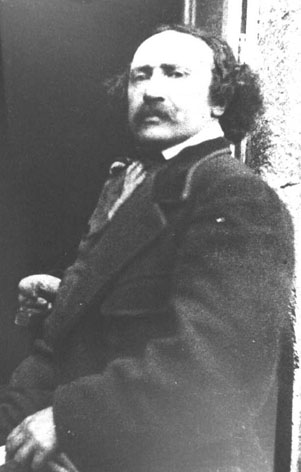
Ys, also spelled Is or Kêr-Is in Breton, and Ville d'Ys in French, is a mythical city on the coast of Brittany that was swallowed up by the ocean. Most versions of the legend place the city in the Baie de Douarnenez.

Princess Belle-Etoile is a French literary fairy tale written by Madame d'Aulnoy. Her source for the tale was Ancilotto, King of Provino, by Giovanni Francesco Straparola.
Morgens, morgans, or mari-morgans are Welsh and Breton water spirits that drown men.

Jules François Felix Fleury-Husson, who wrote under the name Champfleury, was a French art critic and novelist, a prominent supporter of the Realist movement in painting and fiction.

François-Marie Luzel, often known by his Breton name Fañch an Uhel, was a French folklorist and Breton-language poet.
Françoise Morvan is a French writer who specialises in Breton history and culture.

Henri Gaidoz (1842–1932), was a collector and researcher of materials relating to folklore. His works and expertise was in the fields of philology, Celtic studies, archaeology, religion, and mythology.
Rachel Harriette Busk (1831—1907) was a British traveller and folklorist.

Paul Topinard was a French physician and anthropologist who was a student of Paul Broca and whose views influenced the methodology adopted by Herbert Hope Risley in his ethnographic surveys of the people of India. He became director of the École d'Anthropologie and secretary-general of the Société d'Anthropologie de Paris, both in succession to Broca. He was elected as a member to the American Philosophical Society in 1886.

Ernest-Théodore Hamy was a French anthropologist and ethnologist.
Émile Nourry was a French publisher, bookseller, and folklorist known under the pen name Pierre Saintyves.
Paul Alfred Delarue, born 20 April 1889 in Saint-Didier, Nièvre, died 25 July 1956 in Autun, Saône-et-Loire, was a French folklorist.

A groac'h is a kind of Breton water-fairy. Seen in various forms, often by night, many are old, similar to ogres and witches, sometimes with walrus teeth. Supposed to live in caverns, under the beach and under the sea, the groac'h has power over the forces of nature and can change its shape. It is mainly known as a malevolent figure, largely because of Émile Souvestre's story La Groac'h de l'île du Lok, in which the fairy seduces men, changes them into fish and serves them as meals to her guests, on one of the Glénan Islands. Other tales present them as old solitary fairies who can overwhelm with gifts the humans who visit them.
Théodore Ber, was a French archaeologist and anthropologist who spent most of his adult life in Peru. Although an amateur, his work was appreciated by some scholars and officially recognized by the French government.
Elvire-Louise-Léonarde de Preissac, comtesse de Cerny, known as Elvire de Cerny (1818-1899) was a French writer and folklorist.
The Tréo-Fall, also known as danserien-noz, are lutin-like creatures from the folklore of Lower Brittany. Under this first name, they are specific to the island of Ushant, where traditions about them were collected by François-Marie Luzel.

Houles fairies are fairies specific to the Channel coast, stretching from Cancale to Tréveneuc in Upper Brittany, to the Channel Islands, and known from a few fragments of stories in the Cotentin region. They live in coastal caves and caverns known as houles. Reputed to be magnificent, immortal and very powerful, they are sensitive to salt. Rather benevolent, the swell fairies described in local stories live in communities, do their own laundry, bake their own bread or tend their own flocks, marry male fairies and are served by warrior goblins called Fions. They come to the aid of humans in many ways, providing food and enchanted objects, but get angry if anyone disrespects them or acquires the power to see their disguises without their consent.
David Hopkin is a British historian, who specialises in European social history and folklore in the eighteenth and nineteenth centuries.

The presence of horses in Breton culture is reflected in the strong historical attachment of the Bretons to this animal, and in religious and secular traditions, sometimes seen from the outside as part of local folklore. Probably revered since ancient times, the horse is the subject of rites, witchcraft, proverbs and numerous superstitions, sometimes involving other animals.
Claudie Marcel-Dubois was a French ethnomusicologist and pianist. From 1937 until her retirement in 1981, she worked at the Musée national des Arts et Traditions populaires (MNATP) in Paris. She was president of the Société d'ethnologie française from 1978 to 1987. She taught at the Ecole des Hautes Etudes en Sciences Sociales in Paris.












